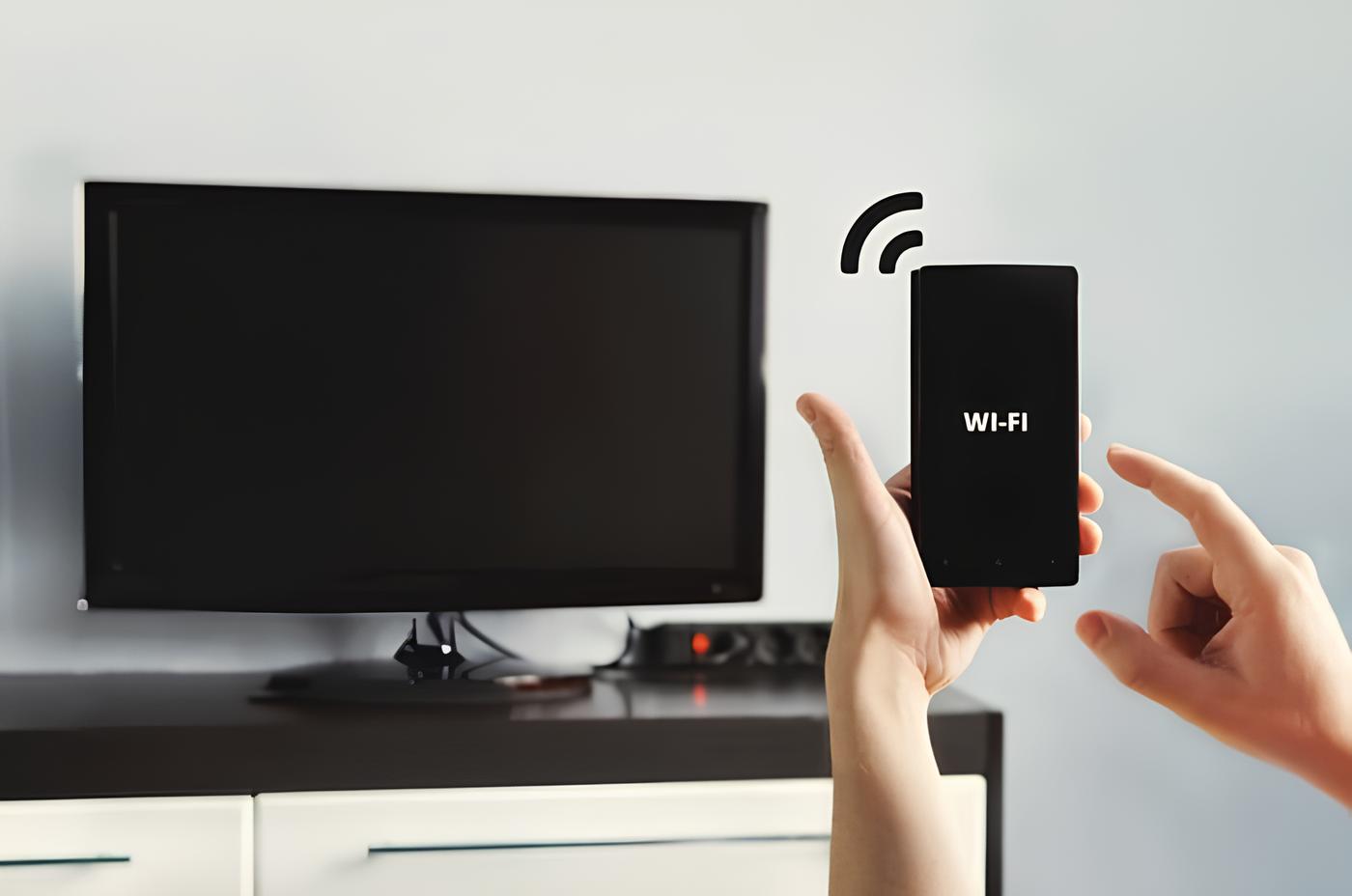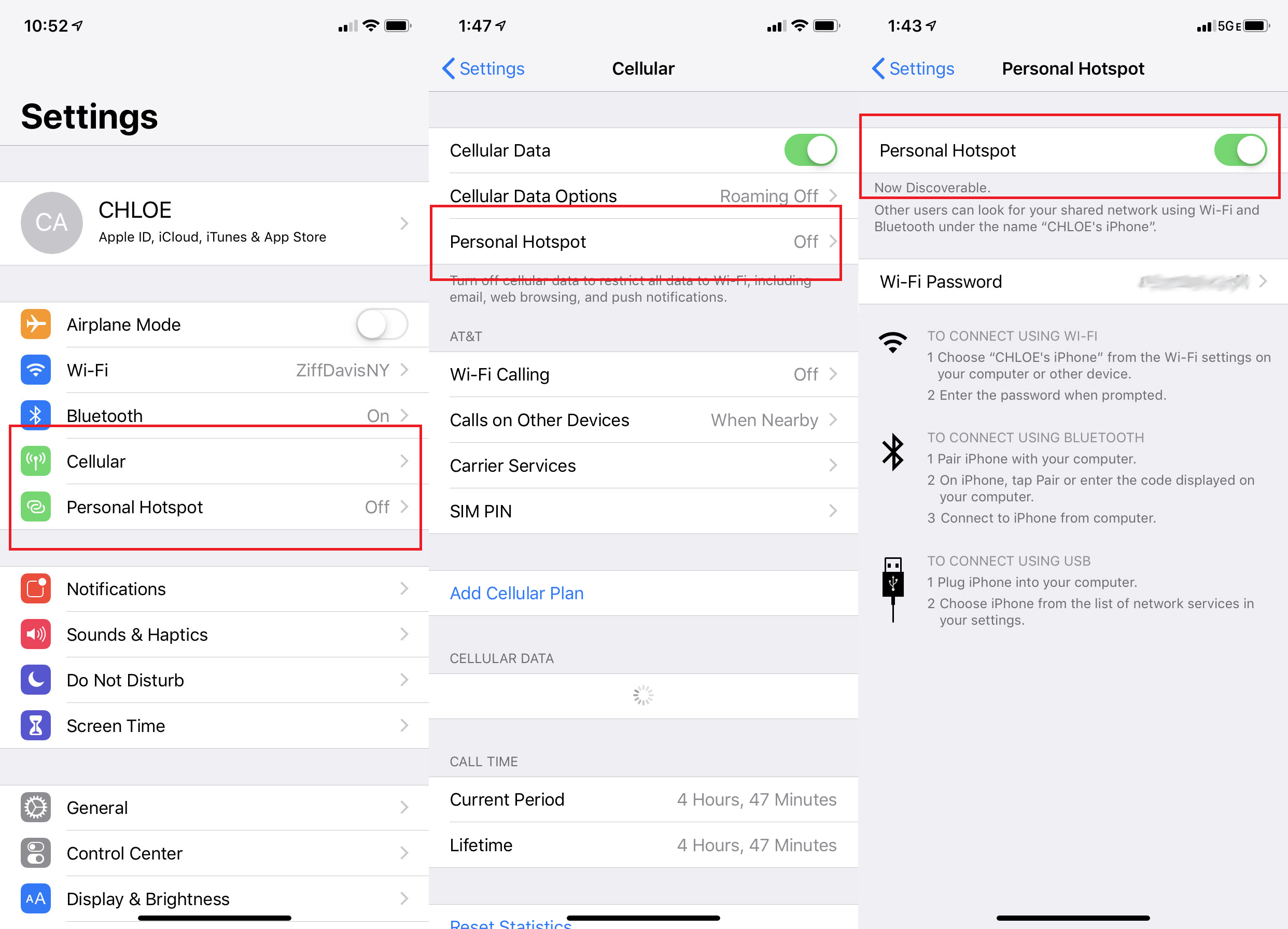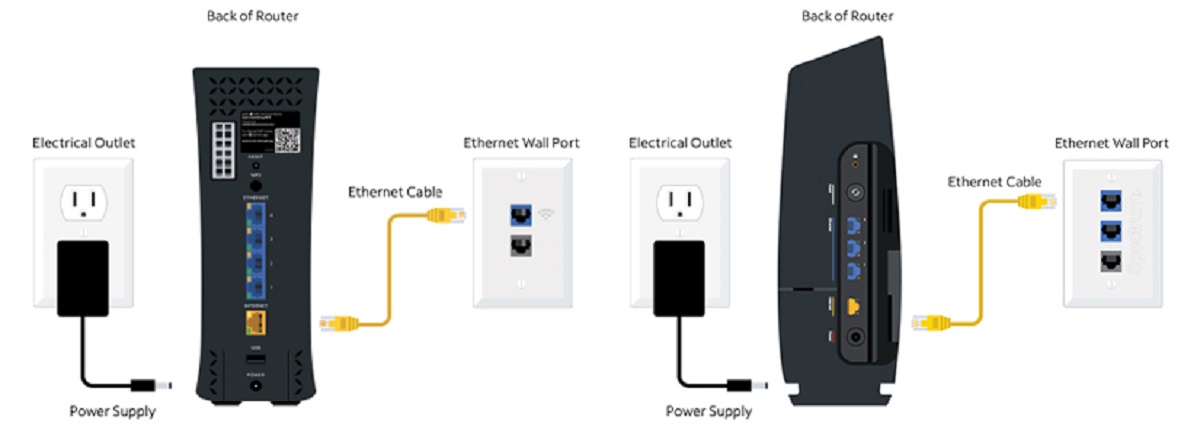Introduction
Welcome to the world of creating your own hotspot! In this digital age, the demand for internet connectivity is ever-increasing. Whether you're a small business owner looking to attract more customers or a tech-savvy individual wanting to share internet access with friends and family, setting up a hotspot can provide immense value and convenience.
Creating a hotspot allows you to establish a wireless network that enables users to connect to the internet using their smartphones, laptops, or other devices. This can be particularly beneficial in locations where traditional Wi-Fi may not be readily available, such as outdoor events, cafes, or small businesses.
In this comprehensive guide, we will walk you through the essential steps and tips to help you create your own hotspot. From choosing the right location and selecting the appropriate equipment to setting up and securing your hotspot, we've got you covered. Additionally, we'll delve into effective strategies for promoting your hotspot to attract users and maximize its utility.
By the end of this journey, you will have the knowledge and confidence to establish a reliable and secure hotspot that meets the connectivity needs of your target audience. So, let's dive in and embark on this exciting adventure of creating your very own hotspot!
Step 1: Choosing the Right Location
Selecting the right location for your hotspot is a crucial first step in the process. The success of your hotspot largely depends on the accessibility and appeal of the chosen location. Here are some key factors to consider when choosing the perfect spot for your hotspot:
-
Target Audience: Identify your target audience and their connectivity needs. Are you aiming to attract customers to your business, provide internet access in a public space, or cater to a specific demographic? Understanding your audience will help you determine the most suitable location for your hotspot.
-
Foot Traffic: Consider the volume of foot traffic in the area. High-traffic locations such as shopping centers, parks, or entertainment venues can offer great exposure for your hotspot and attract a larger user base.
-
Accessibility: Ensure that the location is easily accessible to your target audience. Whether it's a cafe, a community center, or an outdoor event space, convenience plays a pivotal role in encouraging users to connect to your hotspot.
-
Competition: Assess the level of competition in the area. If there are already established hotspots or Wi-Fi networks nearby, it's important to evaluate whether there is still a demand for additional connectivity options.
-
Physical Environment: Take into account the physical environment of the location. Factors such as building layout, potential obstructions, and signal interference can impact the effectiveness of your hotspot.
-
Regulatory Considerations: Familiarize yourself with any local regulations or restrictions related to setting up a public Wi-Fi hotspot. Compliance with legal requirements is essential to avoid any potential issues down the line.
-
Amenities and Comfort: Consider the amenities and overall comfort of the location for hotspot users. Providing a pleasant environment with seating, shade, or other facilities can enhance the overall experience for individuals connecting to your hotspot.
By carefully evaluating these factors, you can pinpoint the ideal location that aligns with your goals and effectively caters to the connectivity needs of your target audience. Choosing the right location sets the stage for a successful and impactful hotspot that can make a meaningful difference in the lives of its users.
Step 2: Selecting the Right Equipment
The success of your hotspot hinges on the selection of suitable equipment that ensures reliable connectivity and seamless user experience. When it comes to setting up your hotspot, choosing the right equipment is paramount. Here's a detailed exploration of the essential components you need to consider:
1. Router or Hotspot Device
Selecting the appropriate router or hotspot device forms the foundation of your hotspot setup. Look for a device with robust Wi-Fi capabilities, sufficient coverage range, and support for multiple simultaneous connections. Consider factors such as portability, power source options, and ease of configuration to align with the specific needs of your chosen location.
2. Internet Connection
A stable and high-speed internet connection is the lifeblood of your hotspot. Whether you opt for a wired broadband connection, a dedicated data plan, or a combination of both, ensure that the internet service meets the demands of your target audience. Consider factors such as bandwidth, data limits, and scalability to accommodate varying user loads.
3. Antennas and Signal Boosters
In environments with potential signal challenges, such as outdoor or large indoor spaces, investing in quality antennas and signal boosters can significantly enhance the coverage and signal strength of your hotspot. Assess the layout and size of the location to determine the optimal placement and configuration of antennas for maximum effectiveness.
4. Power Source
Ensure that the chosen equipment can be powered reliably, especially in scenarios where access to electrical outlets may be limited. Battery-powered routers or devices with low power consumption can offer flexibility and resilience, allowing you to deploy your hotspot in diverse settings without being tethered to a specific power source.
5. Security Features
Prioritize equipment that incorporates robust security features to safeguard the privacy and integrity of user data. Look for routers or hotspot devices with built-in encryption, firewall capabilities, and secure access controls to mitigate potential security risks and protect both the hotspot users and the network itself.
6. Scalability and Future Expansion
Anticipate the potential growth of your hotspot and select equipment that supports scalability and future expansion. Whether it's accommodating a larger user base, extending coverage to additional areas, or integrating advanced features, choosing scalable equipment can future-proof your hotspot and minimize the need for frequent upgrades.
By meticulously evaluating and selecting the right equipment based on these considerations, you can lay a solid foundation for your hotspot, ensuring seamless connectivity, robust performance, and a positive user experience. The careful selection of equipment sets the stage for the successful implementation and operation of your hotspot, empowering you to deliver reliable internet access to your target audience.
Step 3: Setting Up Your Hotspot
Setting up your hotspot involves the practical implementation of the chosen location and equipment to establish a functional and accessible wireless network. This pivotal step transforms your vision into reality, enabling users to seamlessly connect to the internet through your hotspot. Here's a comprehensive guide to help you navigate the process of setting up your hotspot:
-
Positioning the Equipment: Begin by strategically positioning the router or hotspot device in the selected location. Optimize the placement to ensure maximum coverage and signal strength, taking into account factors such as obstructions, signal interference, and the layout of the area. Adjust the antennas or signal boosters as needed to achieve optimal coverage.
-
Configuring Network Settings: Access the administrative interface of the router or hotspot device to configure essential network settings. Set up the Wi-Fi network name (SSID) and password, ensuring that it aligns with your branding or location identity. Implement security protocols such as WPA2 encryption to protect the integrity of the network and the privacy of users.
-
Testing Connectivity: Perform thorough testing to verify the functionality and reliability of the hotspot. Connect various devices to the network to ensure seamless access to the internet. Test the signal strength and stability across different areas within the location to identify potential dead zones or areas with poor connectivity.
-
User Accessibility: Create clear and visible signage or digital prompts that inform users about the availability of the hotspot and provide instructions for connecting to the network. Ensure that the SSID and password are prominently displayed, making it easy for individuals to discover and access the hotspot without confusion.
-
User Experience Optimization: Consider the overall user experience by providing additional amenities such as seating, charging stations, or informational materials about the hotspot. Enhancing the comfort and convenience of users can contribute to a positive perception of the hotspot and encourage repeat usage.
-
Monitoring and Maintenance: Establish a plan for ongoing monitoring and maintenance of the hotspot. Regularly assess the performance of the network, address any technical issues promptly, and update the equipment firmware or software as necessary to ensure optimal functionality and security.
By diligently following these steps and paying attention to the details of setting up your hotspot, you can create a reliable and user-friendly wireless network that meets the connectivity needs of your target audience. The successful implementation of your hotspot sets the stage for its continued operation and the fulfillment of its purpose in providing accessible internet connectivity.
Step 4: Securing Your Hotspot
Securing your hotspot is paramount to protect the integrity of the network, safeguard user privacy, and mitigate potential security threats. By implementing robust security measures, you can instill confidence in users and ensure that their browsing activities remain safe and private. Here's a detailed exploration of the essential steps to secure your hotspot effectively:
-
Encryption and Authentication: Enable WPA2 (Wi-Fi Protected Access 2) encryption on your router or hotspot device to encrypt data transmitted over the network. Implement strong, unique passwords for the Wi-Fi network to prevent unauthorized access. Additionally, consider utilizing a captive portal for user authentication, requiring individuals to authenticate before gaining access to the internet.
-
Firewall Configuration: Configure and enable a firewall on your router to filter incoming and outgoing network traffic. A well-configured firewall acts as a barrier against potential cyber threats and unauthorized access attempts, adding an extra layer of protection to your hotspot.
-
Guest Network Isolation: If your hotspot caters to both guests and internal operations, consider setting up a separate guest network. Isolating the guest network from internal resources enhances security by preventing unauthorized access to sensitive data and devices within your primary network.
-
Firmware and Software Updates: Regularly update the firmware and software of your router or hotspot device to patch security vulnerabilities and ensure the latest security enhancements. Outdated firmware can expose your hotspot to known security flaws, making it susceptible to exploitation by cyber attackers.
-
Logging and Monitoring: Implement logging and monitoring mechanisms to track network activities and identify potential security incidents. By maintaining logs of network traffic and user activities, you can proactively detect and respond to suspicious behavior, protecting the integrity of your hotspot.
-
User Privacy Policies: Clearly communicate the privacy policies and terms of use for your hotspot to users. Provide transparent information about data collection, usage, and retention practices, empowering users to make informed decisions about their online activities while connected to your network.
-
Physical Security Measures: If your hotspot equipment is located in a publicly accessible area, ensure that it is physically secure. Protect the router or hotspot device from tampering or unauthorized access by deploying it in a locked enclosure or utilizing physical security measures to prevent interference.
By meticulously implementing these security measures, you can fortify your hotspot against potential threats and vulnerabilities, fostering a secure and trustworthy environment for users to access the internet. Prioritizing the security of your hotspot is essential in building user confidence and ensuring the sustained integrity of the network.
Step 5: Promoting Your Hotspot
Promoting your hotspot is a pivotal step in maximizing its visibility and attracting a steady stream of users. Effective promotion not only increases awareness of your hotspot but also enhances its value proposition, making it an enticing option for individuals seeking internet connectivity. Here's a detailed exploration of strategies to effectively promote your hotspot:
-
Branding and Signage: Create distinctive branding elements for your hotspot, including a captivating logo and visually appealing signage. Design eye-catching signage that clearly communicates the availability of the hotspot and prominently displays the network name (SSID) and connection instructions. Consistent and recognizable branding contributes to the professional and inviting image of your hotspot.
-
Online Presence: Leverage online platforms to promote your hotspot to a wider audience. Create a dedicated webpage or section on your business website that highlights the features and benefits of your hotspot. Utilize social media channels to share engaging content about your hotspot, including user testimonials, special promotions, and real-time updates on its availability.
-
Collaborations and Partnerships: Explore partnerships with local businesses, event organizers, or community groups to expand the reach of your hotspot. Collaborative promotions and cross-marketing efforts can amplify the visibility of your hotspot, especially in locations with complementary audiences or shared interests.
-
Incentives and Special Offers: Attract users by offering incentives or special offers tied to the use of your hotspot. Consider providing limited-time promotions, discounts, or exclusive perks for individuals who connect to your network. This can incentivize repeat usage and encourage positive word-of-mouth referrals.
-
Community Engagement: Engage with the local community to promote your hotspot as a valuable resource. Participate in community events, sponsor relevant gatherings, or host informational sessions to raise awareness about the availability and benefits of your hotspot. Building a strong community presence can foster goodwill and support for your hotspot.
-
User Feedback and Testimonials: Showcase positive user feedback and testimonials to build credibility and trust. Encourage satisfied users to share their experiences with your hotspot, whether through online reviews, social media posts, or dedicated testimonials on your promotional materials. Authentic user endorsements can significantly influence potential users.
-
Targeted Advertising: Consider targeted advertising through digital channels or local publications to reach specific demographics or geographic areas. Tailor your advertising efforts to align with the preferences and behaviors of your target audience, maximizing the impact of your promotional messages.
By implementing these promotional strategies, you can effectively elevate the visibility and desirability of your hotspot, ultimately attracting a diverse and engaged user base. The proactive promotion of your hotspot ensures that it fulfills its potential as a valuable and accessible internet connectivity solution.
Conclusion
In conclusion, the journey of creating your own hotspot is a rewarding endeavor that empowers you to provide valuable internet connectivity to your target audience. By carefully considering the location, selecting the right equipment, setting up and securing the hotspot, and implementing effective promotional strategies, you can establish a reliable and accessible wireless network that meets the diverse connectivity needs of users.
The process begins with choosing the right location, where factors such as target audience, foot traffic, accessibility, competition, and regulatory considerations play a pivotal role. Selecting a location that aligns with the needs and preferences of your intended users sets the stage for a successful hotspot deployment.
The selection of the right equipment forms the foundation of your hotspot, ensuring reliable connectivity, scalability, and robust security features. From routers and internet connections to antennas, signal boosters, and power sources, each component contributes to the seamless operation and user experience of your hotspot.
Setting up the hotspot involves practical steps such as positioning the equipment, configuring network settings, testing connectivity, and optimizing the user experience. Attention to detail during the setup phase ensures that users can easily connect to the network and enjoy a seamless internet browsing experience.
Securing your hotspot is a critical aspect that cannot be overlooked. Implementing encryption, firewall configurations, firmware updates, and user privacy policies fortifies the network against potential security threats, instilling confidence in users and maintaining the integrity of the hotspot.
Finally, promoting your hotspot through branding, online presence, collaborations, incentives, community engagement, user testimonials, and targeted advertising amplifies its visibility and appeal, attracting a diverse user base and maximizing its impact.
In essence, the culmination of these steps and strategies results in the establishment of a hotspot that not only fulfills the connectivity needs of users but also contributes to the overall experience and convenience in the chosen location. Whether it's enhancing the customer experience in a business setting, providing internet access in a public space, or fostering community engagement, your hotspot becomes a valuable asset that enriches the lives of its users.
As you embark on the journey of creating your hotspot, remember that attention to detail, user-centric design, and proactive promotion are key elements in realizing the full potential of your wireless network. With the right approach and a commitment to excellence, your hotspot can become a beacon of connectivity, accessibility, and community empowerment in the digital landscape.

























